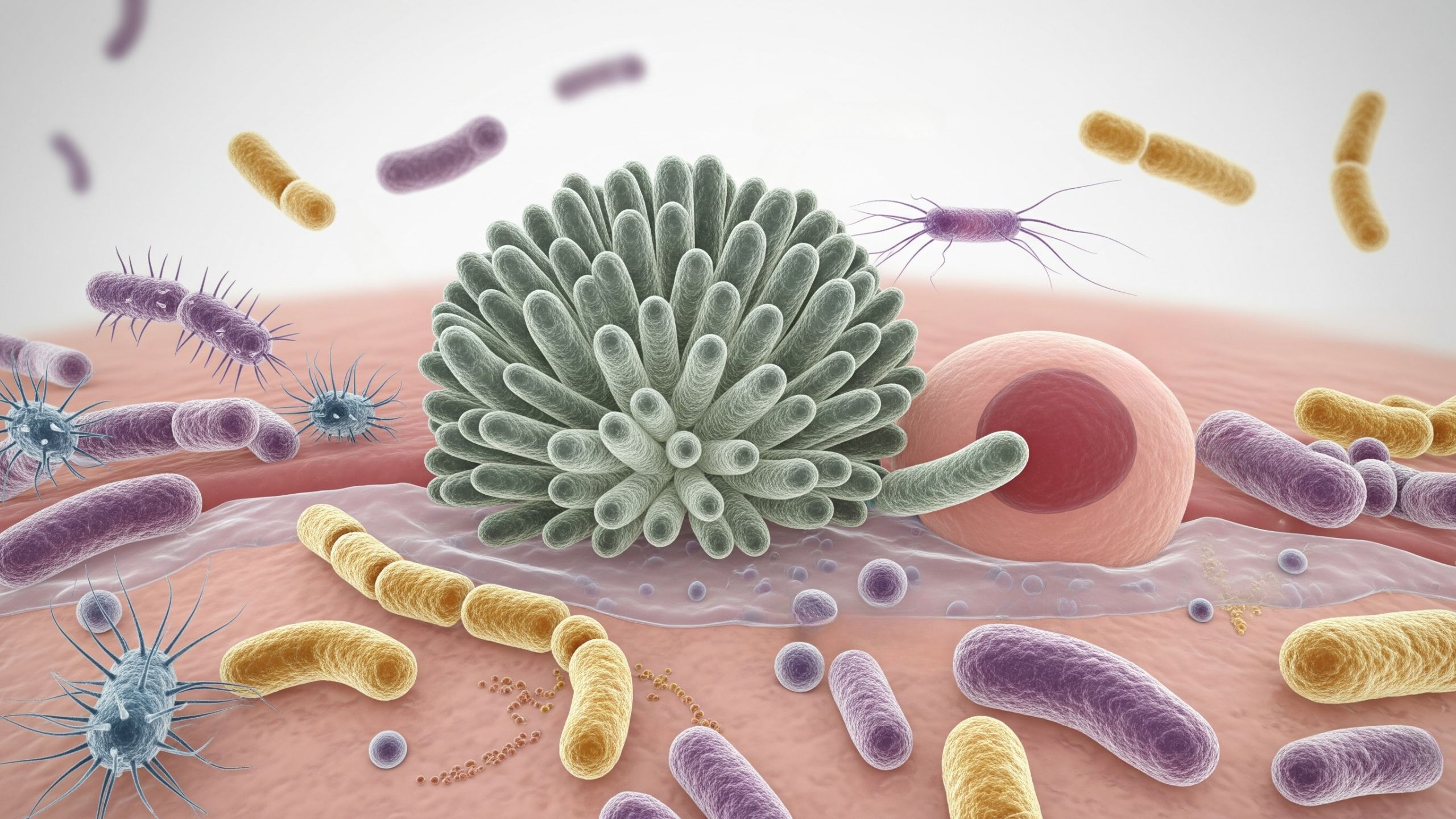The Informed Guide to Vaginal Self-Care: Evidence-Based Practices

The topic of vaginal health is often shrouded in myth, old wives’ tales, and a confusing array of products promising miraculous results. For too long, the narrative has been about masking, fixing, or correcting a perceived problem, rather than understanding and supporting the natural, self-regulating brilliance of the anatomy.
This expert analysis cuts through the noise to offer women a clear, reassuring, and evidence-based guide to effective vaginal self-care. It's time to exchange confusion for confidence and understand what your body truly needs to maintain its delicate, resilient balance.
The Cornerstone of Health: Understanding the Vaginal Microbiome
The vagina is an incredible ecosystem, home to a complex community of microorganisms known as the vaginal microbiome. This environment is naturally acidic, typically maintaining a pH level between 3.8 and 4.5. This low pH is a crucial natural defense mechanism, primarily maintained by beneficial bacteria called Lactobacilli. These Lactobacilli produce lactic acid, which keeps the pH low and effectively crowds out potentially harmful bacteria and yeast.
When this delicate balance is disrupted—whether by certain soaps, antibiotics, hormonal changes, or lifestyle factors—it can lead to conditions like Bacterial Vaginosis (BV) or a Yeast Infection (Candidiasis). Effective self-care, therefore, isn't about scrubbing or sterilizing; it’s about protecting the natural, healthy balance already present.
Gentle Hygiene: Less is Truly More
"Effective self-care, therefore, isn't about scrubbing or sterilizing; it’s about **protecting** the natural, healthy balance already present."
— Lexi Pierce
One of the most common mistakes women make in self-care involves hygiene. Many commercially available products, from scented soaps to specialized washes, contain harsh detergents, fragrances, and dyes that are detrimental to the vaginal environment.
-
External Cleaning Only: The vulva (the external genital area) needs cleaning, but the vagina (the internal canal) is designed to clean itself through natural discharge. Douching, which involves flushing water or a solution up into the vagina, is strongly discouraged by medical professionals. It washes away the protective Lactobacilli, raises the pH, and can push harmful bacteria further into the reproductive tract.
-
The Best Cleanser: For the vulva, the simplest method is often the best: warm water. If a cleanser is desired, choose a mild, unscented, pH-neutral soap and use it sparingly on the external skin only. Avoid letting soap or shampoo run into the vaginal opening while showering.
-
Wiping Technique: After using the restroom, always wipe from front to back. This essential practice prevents the transfer of bacteria, particularly E. coli from the rectal area, to the vaginal and urethral openings, significantly reducing the risk of urinary tract infections (UTIs) and other issues.
Choosing the Right Undergarments and Clothing

What you wear can have a tangible impact on the environment around the vulva, affecting moisture and breathability.
-
Cotton is Key: The best material for everyday underwear is cotton. Cotton is a natural, breathable fiber that absorbs moisture, helping to keep the area dry. Synthetic fabrics like nylon or polyester trap heat and moisture, creating a warm, damp environment where yeast and harmful bacteria can thrive.
-
Ventilation Matters: Be mindful of tight-fitting clothing, especially garments worn for extended periods, such as shapewear, very tight jeans, or sweaty athletic wear. After exercise, change out of sweaty clothes promptly. Wearing a damp swimsuit or sweaty gym clothes for too long is a common trigger for yeast infections because it creates an ideal moist environment for overgrowth.
-
Prioritize Airflow: Providing the genital area with consistent exposure to fresh air is a simple but impactful self-care practice. Women who are able should consider sleeping in the nude to allow for maximum ventilation and keep the area dry and cool overnight. Furthermore, if your lifestyle and comfort level allow, occasionally spending time nude during the day can be beneficial. A helpful tip for maximizing airflow while clothed is to go underwear-free when wearing loose, long skirts or dresses. This allows the clothing to move, circulating air and preventing moisture buildup without compromising comfort or modesty.
Lifestyle Factors that Influence Vaginal Health
Vaginal health isn't isolated; it's a reflection of overall bodily well-being. Several lifestyle choices play a significant role in maintaining a healthy internal environment.
-
Hydration and Diet: Drinking sufficient water supports overall mucosal health and helps flush the urinary tract. While research is ongoing, some women find that a diet high in processed sugar can contribute to recurrent yeast infections, as yeast feeds on sugar. Conversely, a balanced diet rich in fermented foods (like yogurt with live and active cultures, kimchi, or kefir) or a good probiotic supplement may help support the body's healthy bacterial populations, including those in the gut which can influence the vaginal microbiome.
-
Safe Sexual Practices: Semen is naturally alkaline, which can temporarily disrupt the vagina's acidic pH. Using barrier methods and taking time to urinate after intercourse can help prevent the introduction of foreign bacteria and the development of UTIs. Always ensure any sex toys are cleaned thoroughly with soap and water after each use.
-
Hormonal Awareness: Hormones, especially estrogen, are fundamental to vaginal health. Estrogen helps keep the tissues moist, elastic, and supports the Lactobacilli. Changes due to menstruation, pregnancy, breastfeeding, or menopause can significantly alter the vaginal environment, sometimes requiring a discussion with a healthcare provider about appropriate care, such as lubricants or hormonal therapies.
Self-Care Do's and Don'ts: The Quick Reference
| ✅ Do This | ❌ Avoid This |
|---|---|
| Wear breathable, **cotton underwear**. | Use scented soaps, washes, or feminine sprays. |
| Clean the vulva with **warm water** only. | **Douching** (never necessary, often harmful). |
| Sleep **nude** or in loose-fitting pajamas. | Wearing sweaty gym clothes or wet swimsuits for hours. |
| Wipe **front to back** after using the toilet. | Ignoring persistent symptoms like strong odor or itching. |
When Self-Care Meets Professional Care
While good self-care is preventative and supportive, it is crucial to recognize when a symptom requires professional medical attention. Self-diagnosing or self-treating for too long can worsen a condition or delay treatment for something more serious.
Consult a healthcare provider if you experience:
-
Persistent or strong odor that is unusual for you.
-
Significant change in discharge (color, consistency, or amount).
-
Burning, itching, or irritation that doesn't resolve within a day or two.
-
Pelvic pain or pain during intercourse.
-
Bleeding outside of your normal menstrual cycle.
These symptoms could indicate an infection (like a sexually transmitted infection, BV, or yeast infection) or a host of other conditions that require a specific diagnosis and treatment plan from a doctor.
Common Self-Care Questions Answered
Does eating yogurt actually help prevent yeast infections?
Yogurt containing **live and active cultures** (specifically *Lactobacillus* strains) may help support a healthy gut microbiome, which can indirectly benefit vaginal health. While not a standalone treatment, incorporating probiotic-rich foods into a balanced diet is generally a supportive practice.
How often should I change my underwear?
Underwear should be changed **daily** to prevent moisture and bacteria buildup. If you exercise or sweat heavily during the day, changing your underwear after the activity is highly recommended to keep the area dry.
Can stress affect my vaginal health?
Yes. High, chronic stress can affect the immune system and hormonal balance, making the body potentially more susceptible to infections, including yeast infections or BV. Maintaining overall well-being is part of vaginal self-care.
The Self-Care Mindset
Effective vaginal self-care is simple, but requires consistency and awareness. It’s a mindful practice of respect for the body’s innate ability to find equilibrium. By moving away from unnecessary products and adopting simple, evidence-based practices—like wearing cotton, promoting airflow, using plain water for washing, and understanding your body’s unique rhythms—women can confidently maintain a healthy, balanced, and functional environment. True self-care is listening to the body and providing the simple support it needs to thrive.
Disclaimer: The articles and information provided by the Vagina Institute are for informational and educational purposes only. This content is not intended to be a substitute for professional medical advice, diagnosis, or treatment. Always seek the advice of your physician or another qualified health provider with any questions you may have regarding a medical condition.


 English
English  Deutsch
Deutsch  Español
Español  Français
Français 




